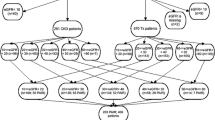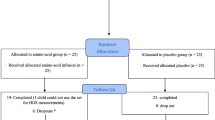Abstract
Background
Protein energy wasting (PEW), a state of deficient protein storage, is not well understood in children and adolescents with chronic kidney disease (CKD). We aimed to re-define PEW using pediatric malnutrition guidelines from the Academy of Nutrition and Dietetics/American Society for Parenteral and Enteral Nutrition (AND/ASPEN), and to describe the relationship between PEW, malnutrition, and kidney function.
Methods
This was a retrospective review of outpatients ≤ 20 years old with a diagnosis of CKD from January 1, 2013, to August 31, 2018. Malnutrition was diagnosed by a licensed dietitian, and PEW was diagnosed using an updated definition incorporating AND/ASPEN malnutrition guidelines. Logistic regression and linear mixed effects modeling were performed on the relationship of malnutrition and PEW to estimated glomerular filtration rate (eGFR).
Results
The 142 patients included in this analysis had a median age of 11.1 years and median eGFR of 57 ml/min/1.73 m2 at initial visit. Malnutrition was diagnosed in 50% of patients in at least one visit, and 17.6% met ≥ 2 PEW criteria. Patients with eGFR < 30 ml/min/1.73 m2 had significantly increased risk of malnutrition [OR 2.5, 95% CI 2.0–3.3] (p < 0.001) and PEW [OR 4.9, 95% CI 3.0–8.0] (p < 0.001). A diagnosis of malnutrition or PEW was associated with worse eGFR by logistic regression (p = 0.01 and p = 0.001, respectively) and more rapid eGFR decline by linear mixed effects model (p = 0.002 and p < 0.001, respectively) compared to those without these diagnoses.
Conclusions
Malnutrition and PEW are prevalent in pediatric CKD and are associated with significantly lower eGFR and more rapid decline in eGFR, emphasizing the need to address nutritional status.
Graphical abstract

A higher resolution version of the Graphical abstract is available as Supplementary information


Similar content being viewed by others
Data Availability
The datasets generated during and/or analyzed during the current study are available from the corresponding author on reasonable request.
References
Kalantar-Zadeh K, Ikizler TA, Block G, Morrel A, Kopple J (2003) Malnutrition-inflammation complex syndrome in dialysis patients: causes and consequences. Am J Kidney Dis 42:864–881. https://doi.org/10.1016/j.ajkd.2003.07.016
Ku E, Kopple JD, McCulloch CE, Warady B et al (2018) Associations between weight loss, kidney function decline, and risk of ESRD in the chronic kidney disease in children (CKiD) cohort study. Am J Kidney Dis 71:648–656. https://doi.org/10.1053/j.ajkd.2017.08.013
Oliveira EA, Cheung WW, Toma KG, Mak RH (2018) Muscle wasting in chronic kidney disease. Pediatr Nephrol 33:789–798. https://doi.org/10.1007/s00467-017-3684-6
Patel HP, Saland JM, Ng DK, Jiang S et al (2017) Waist circumference and body mass index in children with chronic kidney disease and metabolic, cardiovascular, and renal outcomes. J Pediatr 191:133–139. https://doi.org/10.1016/j.jpeds.2017.08.047
Iorember FM (2018) Malnutrition in chronic kidney disease. Front Pediatr 6:161. https://doi.org/10.3389/fped.2018.00161
Nourbakhsh N, Rhee CM, Kalantar-Zadeh K (2014) Protein-energy wasting and uremic failure to thrive in children with chronic kidney disease: they are not small adults. Pediatr Nephrol 29:2249–2252. https://doi.org/10.1007/s00467-014-2898-0
Monzani A, Perrone M, Prodam F, Moia S et al (2018) Unacylated ghrelin and obestatin: promising biomarkers of protein energy wasting in children with chronic kidney disease. Pediatr Nephrol 33:661–672. https://doi.org/10.1007/s00467-017-3840-z
Abraham AG, Mak RH, Mitsnefes M, White C et al (2014) Protein energy wasting in children with chronic kidney disease. Pediatr Nephrol 29:1231–1238. https://doi.org/10.1007/s00467-014-2768-9
Carrero JJ, Stenvinkel P, Cuppari L, Ikizler T et al (2013) Etiology of the protein-energy wasting syndrome in chronic kidney disease: a consensus statement from the International Society of Renal Nutrition and Metabolism (ISRNM). J Ren Nutr 23:77–90. https://doi.org/10.1053/j.jrn.2013.01.001
KDOQI Work Group (2009) KDOQI clinical practice guideline for nutrition in children with CKD: 2008 update Executive summary. Am J Kidney Dis 53:S11–S104. https://doi.org/10.1053/j.ajkd.2008.11.017
Ikizler TA, Burrowes JD, Byham-Gray LD, Campbell K et al (2020) KDOQI clinical practice guideline for nutrition in CKD: 2020 update. Am J Kidney Dis 76:S1–S107. https://doi.org/10.1053/j.ajkd.2020.05.006
Nelms CL, Shaw V, Greenbaum LA, Anderson C et al (2021) Assessment of nutritional status in children with kidney diseases-clinical practice recommendations from the Pediatric Renal Nutrition Taskforce. Pediatr Nephrol 36:995–1010. https://doi.org/10.1007/s00467-020-04852-5
Becker P, Carney LN, Corkins MR, Monczka J et al (2015) Consensus statement of the academy of nutrition and dietetics/American society for parenteral and enteral nutrition: indicators recommended for the identification and documentation of pediatric malnutrition (undernutrition). Nutr Clin Pract 30:147–161. https://doi.org/10.1177/0884533614557642
Schwartz GJ, Brion LP, Spitzer A (1987) The use of plasma creatinine concentration for estimating glomerular filtration rate in infants, children, and adolescents. Pediatr Clin North Am 34:571–590. https://doi.org/10.1016/s0031-3955(16)36251-4
Centers for Disease Control and Prevention (2022) WHO Growth Charts. https://www.cdc.gov/growthcharts/who_charts.htm. Accessed 26 May 2023
Centers for Disease Control and Prevention (2022) CDC Growth Charts. https://www.cdc.gov/growthcharts/cdc_charts.htm. Accessed 26 May 2023
Sozeri B, Mir S, Kara OD, Dincel N (2011) Growth impairment and nutritional status in children with chronic kidney disease. Iran J Pediatr 21:271–277
Apostolou A, Printza N, Karagiozoglou-Lampoudi T, Dotis J et al (2014) Nutrition assessment of children with advanced stages of chronic kidney disease-a single center study. Hippokratia 18:212–216
Kang SS, Chang JW, Park Y (2017) Nutritional status predicts 10-year mortality in patients with end-stage renal disease on hemodialysis. Nutrients 9:399. https://doi.org/10.3390/nu9040399
Wong CS, Hingorani S, Gillen DL, Sherrard D et al (2002) Hypoalbuminemia and risk of death in pediatric patients with end-stage renal disease. Kidney Int 61:630–637. https://doi.org/10.1046/j.1523-1755.2002.00169.x
Mak RH, Cheung WW, Zhan J-Y, Shen Q et al (2012) Cachexia and protein-energy wasting in children with chronic kidney disease. Pediatr Nephrol 27:173–181. https://doi.org/10.1007/s00467-011-1765-5
Norman LJ, Coleman JE, Macdonald IA, Tomsett A et al (2000) Nutrition and growth in relation to severity of renal disease in children. Pediatr Nephrol 15:259–265. https://doi.org/10.1007/s004670000465
Kopple JD, Greene T, Chumlea WC, Hollinger D et al (2000) Relationship between nutritional status and the glomerular filtration rate: results from the MDRD study. Kidney Int 57:1688–1703. https://doi.org/10.1046/j.1523-1755.2000.00014.x
Author information
Authors and Affiliations
Contributions
All authors contributed to the study conception and design. Data collection was performed by Carol Shen and Dana Liebstein. Nutritional assessments were made by Dana Liebstein. Statistical analyses were performed by Carol Shen and Hilda Fernandez. Drafts and edits of the manuscript were written by all authors. All authors read and approved the final manuscript.
Corresponding author
Ethics declarations
Ethics approval
This retrospective chart review study involving human participants was in accordance with the ethical standards of the institutional and national research committee and with the 1964 Helsinki Declaration and its later amendments or comparable ethical standards. The Human Investigation Committee (IRB) of Columbia University approved this study.
Competing interests
The authors declare no competing interests.
Additional information
Publisher's note
Springer Nature remains neutral with regard to jurisdictional claims in published maps and institutional affiliations.
Supplementary Information
Below is the link to the electronic supplementary material.
Rights and permissions
Springer Nature or its licensor (e.g. a society or other partner) holds exclusive rights to this article under a publishing agreement with the author(s) or other rightsholder(s); author self-archiving of the accepted manuscript version of this article is solely governed by the terms of such publishing agreement and applicable law.
About this article
Cite this article
Shen, C.L., Liebstein, D. & Fernandez, H. Malnutrition and protein energy wasting are associated with severity and progression of pediatric chronic kidney disease. Pediatr Nephrol 39, 243–250 (2024). https://doi.org/10.1007/s00467-023-06078-7
Received:
Revised:
Accepted:
Published:
Issue Date:
DOI: https://doi.org/10.1007/s00467-023-06078-7




